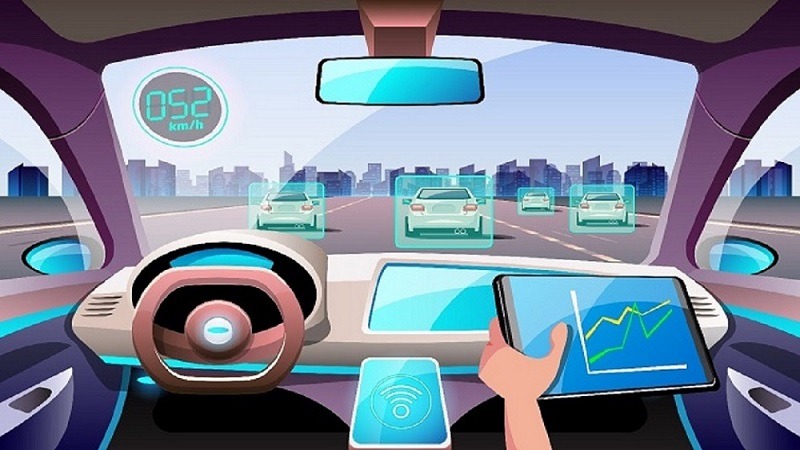The public education system is just one of the many industries artificial intelligence has transformed. Educators can leverage artificial intelligence in classrooms, schools, and educational systems to enhance teaching tactics, personalize learning experiences, and reduce administrative workloads. The applications of Artificial Intelligence In Public Education Technology, resources utilized in the classroom, practical implementations of AI, benefits associated with artificial intelligence, and a well-known generative AI development services in business that is leading the way in educational innovation are all covered in this article.
Functions of AI in Education
In the traditional classroom setting, the image often revolves around a tutor delivering lessons solely through verbal instruction or on the board. But with the advent of artificial intelligence classrooms, we are thrust into a world of visualized concepts, where students travel through classes to acquire a more profound comprehension of the subject matter. Students are no longer limited to passive learning in these environments; rather, they actively participate with immersive visualizations that make difficult and abstract concepts come to life. Students can learn difficult subjects more efficiently and retain the information better if they can visualize the material. The major Functions of AI in Education are discussed as below:
- One to one learning
- Learn At your own learning phase
- Continuous feedback and appraisal
- Learn from Anywhere
ONE-TO-ONE Learning: Artificial intelligence makes tailored learning experiences possible by analyzing students’ learning preferences, passions, and skills. Using adaptive algorithms, Artificial Intelligence systems may modify the pace, material, and educational tactics to meet the needs of individual students. For instance, the people who experience difficulty understanding a specific idea could get extra practice materials, elective clarifications, enhancement exercises, or seriously testing material for cutting-edge understudies.
Continuous Feedback and Appraisal: Artificial intelligence controlled appraisal arrangements change customary testing strategies by giving customized and versatile tests. These innovations consider theme and trouble level alterations in light of individual execution through ongoing examination of understudy answers. Tests that are versatile deal with quick criticism and powerfully adjust to every understudy’s ability level, empowering better figuring out, inspiration, and commitment.
Learn From Anywhere: By offering convenient help, direction, and assets, chatbots and menial helpers driven by artificial intelligence upgrade instructor understudy collaborations. These remote helpers can respond to inquiries at anytime regardless of the place either at classrooms or home. It gives admittance to extra learning materials, and makes sense of mind boggling ideas. For example, in the context of mathematics education, a digital educational application can offer support akin to an online math tutor among other resources, aiding in the comprehension and mastery of mathematical principles. Virtual guides offer help through the utilization of regular language handling (NLP) strategies.
Learn At your own learning phase:
With the utilization of artificial intelligence controlled itools and platforms, the learning phases adapts your own learning speed and observability skills. These tools can study your learning capacities, and develop and plan lessons according to your availability and mood. No need to jungle between bundle of topics in all subjects when learning is more fun with artificial intelligence assistants.
How AI Benefits Eduactors- A time saver for sure!
Chatbots that can teach in all languages. Education is now customized with artificial intelligence tools that requires few supervision of teachers. With smart teaching models.
Content Creation: Artificial Intelligence frameworks are changing the most common way of making instructive assets like worksheets, tests, and example plans via automating the cycle. Customized learning materials can be made by artificial intelligence stages in light of educational plan necessities, learning goals, and understudy using calculations for normal language age (NLG). Educators can utilize artificial intelligence produced content to improve, separate, and help understudy learning in the study hall fitted instruction to address the issues of different understudy groupings.
Data Analysis Software: Teachers and administrators may analyze student performance data, spot learning trends, and make educated decisions regarding education with the help of data analysis software. These analytical tools detect at-risk pupils, enhance instruction, and efficiently manage resources, among other areas, by using algorithms to produce insights.
Voice Recognition Software: By offering precise pronunciation feedback and interactive language practice, artificial intelligence voice bot development recognition software enhances language acquisition and communication abilities. These resources evaluate students’ oral language skills, point out pronunciation mistakes, and provide insightful comments to enhance language competency. Speech recognition software improves fluency in language, improves oral communication abilities, and offers insightful educational opportunities.
Chatbots: Artificial Intelligence controlled chatbots act as online coaches, offering moment help to understudies by responding to questions, clarifying thoughts, and giving admittance to learning assets. These chatbots energize independent learning and deal individualized direction by utilizing regular language handling (NLP) calculations to comprehend and answer understudies’ requests.
Versatile learning frameworks: That can change tests, speed, and course happiness given the singular necessities of every understudy using calculations. These frameworks change the trouble and sequencing of the learning exercises given the singular understudy execution information through ongoing examination of students’ degrees of capability and favored strategies for learning.
Smart Coaching Frameworks: By giving understudies designated guidance and criticism, controlled mentoring frameworks guide understudies through particular learning pathways. These instruments survey understudies’ information and abilities recognize regions that require improvement, and proposition designated mediations to work on how they might interpret scholastic ideas. Smart coaching frameworks use calculations to fit guidance to every understudy’s singular learning style and speed to further develop maintenance and advance further comprehension.
AI Tools Used in the Classroom
Duolingo: Duolingo is an artificial intelligence commonly used in AI Tools in the Classroom, is a language-learning application that gives ongoing feedbacks, tracks understudy progress, and modifies examples. The stage adjusts learning exercises and trouble levels in view of individual execution, offering language students of all expertise levels a customized growth opportunity.
Khan Instruction: Khan Institute utilizes versatile learning innovation to change the degree of appraisals and exercises given understudy execution. The product examines understudy reactions progressively and proposes altered proposals and designated mediations to assist understudies with understanding scholarly ideas.
The Shrewd Learning Suite’s fuse of AI empowers customized guidance, ongoing assessment, and intelligent and cooperative growth opportunities. Upgrading understudy accomplishment, inspiration, and commitment are two controlled parts that are smart input and adaptable learning courses.
AI Squirrel: Using calculations to make customized learning ways for every understudy, Squirrel boosts learning results and encourages scholarly achievement. The stage examines understudy execution information, recognizes learning holes, and directs fitted mediations to meet the particular advancing requirements of every understudy.
Benefits of AI in Education
Personalization: Artificial Intelligence engages in the improvement of educational undertakings that are especially hand-crafted to the necessities, interests, and learning styles of each and every student. The benefits of AI in Education can smooth out learning results by examining student data and approaches to acting to change informative substance, beat, and examinations.
Efficiency: Artificial intelligence saves teachers’ opportunity to focus on direction and student responsibility through automating legitimate endeavors including data association, examination auditing, and content creation. In learning settings, result, sufficiency, and resource assignment are redesigned by artificial intelligence-driven plans and motorized processes.
Accessibility: By satisfying the necessities of an alternate student body and offering assistance to students with inabilities, plans engage far reaching guidance. artificial intelligence uses changed intercessions and versatile advances to help worth, accessibility, and exclusivity in tutoring.
Engagement: Instinctive, flexible, artificial intelligence-driven content augmentations student motivation, support, and responsibility, all of which lead to higher learning results. Altered open doors for development, gamified activities, and humble aides generally advance student responsibility, facilitated exertion, and trademark motivation.
Data Organized Bearing: Benefits of Artificial Intelligence in Education outfit teachers and bosses with material data that they could use to seek evidence-based choices that will augment educational practicality and worth. By taking a gander at student execution information, spotting plans in learning, and making assumptions empowers accomplices to lead re-tried interventions, advance instructive methodology, and work on enlightening outcomes for each student.
Examples of Artificial Intelligence in Education – AI Tools for teachers as well
AudioPen: A voice-to-text tool that can write blogs emails and lesson plans with your words as prompts.
Wavel AI: Wavel AI is a ai voice solutions that help content creators to generate voices for their videos for reach more and wider audiences.
Canva Magic Write: A magic tool that converts your text to an image with the Magic Write generator. It provides brainstorming ideas, lesson plans, and creates a graphic presentation for visual lessons.
Curipod: This platform can create interactive visually appealing lessons in minutes. It generates customized videos on broad topics beneficial for both tutors and students. Their ready-to-run lessons also generate fun activities like polls, open-ended responses, word clouds, and more.
Eduaide.AI: It is a lesson development tool that provides tutors with 100+ resources from which we can choose to generate high-quality study materials. It is multilingual and able to develop content in more than 15 languages. Eduaide.AI can be considered as a teaching assistant, free-form chat, and assessment builder.
Quizizz: With the help of this tool, teachers can create quizzes to create the learning assessment in a fun mode. Grammer, vocabulary checking, and redesign questions with more features on the way. Using the Quiz Maker WordPress plugin, educators can easily design interactive and engaging quizzes tailored to their students’ needs.
Slidesgo: This is an Artificial Intelligence presentation maker that can access free templates via Google Slides. Presentations can be created within minutes. All you to do is simply choose a tone- casual, creative, or professional; review for changes and download your presentation.
These are only a few Examples of Artificial Intelligence in Education. There is still a lot more to explore in the future.
Relationship for Making Generative Artificial Intelligence:
One remarkable Generative AI Development Company driving how educational improvement is OpenAI. OpenAI’s creative work attempts in standard language dealing with, Artificial Intelligence, and generative AI have fundamentally impacted preparing. Their GPT (Generative Pre-arranged Transformer) models, such as GPT-3, offer substance age, language translation, and virtual assistance that may be utilized to make altered learning materials, flexible learning stages, and shrewd instructing programs.
Frequently Asked Questions
What is Artificial Intelligence used for kids?
Artificial Intelligence technology gives children access to information and tools that let them explore their interests and creativity in new ways. Children can come up with original ideas and solutions to issues by integrating artificial intelligence into their play and learning, which fosters their innate creativity and inventiveness.
Which Artificial Intelligence is used for homework?
- Grammarly – An AI-powered writing assistant that checks your writing for grammar, spelling, punctuation, and style errors.
- Chegg Study – an online tutoring platform that uses artificial intelligence to help personalized study to students.
Final thought
With everything taken into account, by offering data-driven pieces of information, virtual appearance partners, flexible evaluation gadgets, and adjusted open doors for development, mechanized thinking has the enormous potential to change state-supported preparation totally. It is essential that policymakers, educators, and other very familiar people take on As makes and enters tutoring frameworks, we can utilize redesigning instructing and learning results for all understudies with moderate potential. The inevitable destiny of guidance is astonishing, exhaustive, and solid for students of all ages and establishments because of creative applications, helpful associations, and confirmation-based teaching strategies.
Read more:



